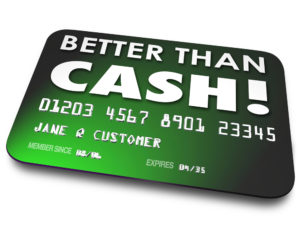If you are planning your exit from the business, what is the best asset that you have to sell? Unless you have patented product, exclusive rights, or long-term customer contracts, you answer was likely “Our people.”
 Even if you have strategic differentiation like the ones above, “our people” was still likely a top-three answer. Proponents of Human Resource Accounting correctly point out that few businesses have a bigger investment. Hiring, training and developing talent is at the center of most successful organizations.
Even if you have strategic differentiation like the ones above, “our people” was still likely a top-three answer. Proponents of Human Resource Accounting correctly point out that few businesses have a bigger investment. Hiring, training and developing talent is at the center of most successful organizations.
But people aren’t chattels. How can someone rationally consider paying top dollar for your successful business when its best asset might disappear the day after closing the sale?
Securing a great price for your company means paying attention to its value drivers. Those include documentation of reproducible processes and quality controls. Customer diversity, long term relationships and a clear marketing strategy are also important. All those pale, however, against the ability to assure a transition of your key people.
The Last Minute Bonus
There are numerous stories in the planning world about owners who neglected to protect their best asset. Some are certainly apocryphal, but they all go something liked this.
Bob was straightening up his desk in preparation to move to his smaller, temporary office. He kept pulling out his phone to check if his bank balance reflected the proceeds from the closing wire transfer. He wasn’t thrilled about spending a few months as an employee, but it was well worth it.
There was a quick knock on the door and Jack, the Director of Sales walked right in. Bob thought of how much that irked him, but he wouldn’t have to deal with it much longer. As usual, Jack got right to the point.
“Congratulations Boss. I know that you put many years into building this company, and from what the buyers just told me, you received a great price. I’ll miss working with you.”
Jack didn’t wait for a response. “That new owner, Carl, seems like a nice enough guy. You know, he told me that I was one of the main reasons they bought this business, and they have big plans for me in the future.”
Bob knew the other shoe was about to drop. “So I was thinking. Considering how important I am to a successful transition, how much of that big check were you planning to share with me?”
Bob thought of the escrow fund in the agreement, and how it required transfer of the company without major changes in personnel. He took a deep breath, wondering how much of it he should use for an opening offer.
Sooner Rather than Later
The time to negotiate a stay bonus is before you start the sale process, not after there is money on the table. Securing your best asset adds value to the business, and greatly lessens the chance that an employee will derail any deal.
Many owners hesitate because they fear telling key employees that the business may be sold. That is a rational concern, but the sooner you bring it up, the more inertia will be on your side. When things don’t change right away, people tend to go back to what they were doing.
Explain that transitioning is a logical step for every business, and that once you start the process, it could take years. You want to recognize the employee’s contribution, but you also want to make sure that he or she gives any new owners a fair chance.
Stay bonuses very widely, but an additional half-year’s salary is reasonable in return for two years of post-transition service. In some cases, the bonus can involve a percentage of the sale proceeds placed in escrow and paid after the transition period. The benefit can also vest over time, strengthening your short-term retention.
One thing is certain. Protecting your best asset before starting an exit process will be cheaper than being forced to do it afterwards.
Thanks for Reading! Please share Awake at 2 o’clock with another business owner.
 The USA publishes it’s GDP growth statistics one month after the end of a quarter, with adjustments over the next few months. China puts out the number on the last day of each quarter, and never updates it. As Goolsbee says, that causes economists to wonder, “Why do they wait so long?”
The USA publishes it’s GDP growth statistics one month after the end of a quarter, with adjustments over the next few months. China puts out the number on the last day of each quarter, and never updates it. As Goolsbee says, that causes economists to wonder, “Why do they wait so long?” In a competitive credit environment, advertising for the revolving charge cards was directed to the pleasures of paying for something after you already enjoyed the use of it. The struggle of saving for a long time before purchasing was portrayed as foolish and unnecessary. In the 1980s and ’90s Baby Boomers on the quest for material success embraced the concept wholeheartedly.
In a competitive credit environment, advertising for the revolving charge cards was directed to the pleasures of paying for something after you already enjoyed the use of it. The struggle of saving for a long time before purchasing was portrayed as foolish and unnecessary. In the 1980s and ’90s Baby Boomers on the quest for material success embraced the concept wholeheartedly. It is ironic that the very behaviors that make your life easier appear to be threats in the eyes of a prospective buyer. You know that they could pose a problem, but they haven’t so far. Why fiddle with what’s working?
It is ironic that the very behaviors that make your life easier appear to be threats in the eyes of a prospective buyer. You know that they could pose a problem, but they haven’t so far. Why fiddle with what’s working? But the good customer keeps buying more. They are twenty times your size, and an increase of 2% for them translates into 40% more for you. Businesses in this situation aren’t necessarily complacent. They are just scrambling to keep up.
But the good customer keeps buying more. They are twenty times your size, and an increase of 2% for them translates into 40% more for you. Businesses in this situation aren’t necessarily complacent. They are just scrambling to keep up.